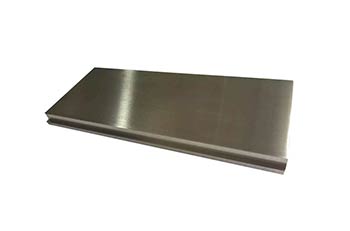
News Center
Current Location:Home > News Center > Fair Information
Current Location:Home > News Center > Fair Information
If the target is a magnetic material, the magnetic flux is shielded by the target, and the magnetic force lines hardly penetrate the target to form a magnetic field above the surface of the target, and the effect of the magnetron is greatly reduced. Therefore, when the magnetic material is sputtered, on the one hand, the magnetic field of the magnetron target is required to be stronger, and on the other hand, the target material is also made thinner so that the magnetic force line can penetrate the target material and generate a magnetron effect above the target surface.
hardly penetrate the target to form a magnetic field above the surface of the target, and the effect of the magnetron is greatly reduced. Therefore, when the magnetic material is sputtered, on the one hand, the magnetic field of the magnetron target is required to be stronger, and on the other hand, the target material is also made thinner so that the magnetic force line can penetrate the target material and generate a magnetron effect above the target surface.
Magnetron sputtering equipment can generally be divided into two kinds of DC sputtering and RF sputtering depending on the power source used. DC magnetron sputtering is characterized by adding a DC voltage between the anode substrate and the cathode target. The cation bombards the target under the action of an electric field, and its sputtering rate is generally relatively large. However, DC sputtering can generally only be used for metal targets, because if it is an insulator target, because the positive particles accumulate on the target surface, so-called "target poisoning" occurs, and the sputtering rate becomes lower and lower.
The principle of magnetron sputtering: electrons accelerate in the process of flying to the substrate under the action of an electric field and collide with argon atoms, ionize a large number of argon ions and electrons, and electrons fly to the substrate. The argon ions accelerate the bombardment of the target under the action of an electric field, sputtering a large number of target atoms, and depositing a neutral target atom (or molecule) on the substrate to form a film. The secondary electrons are influenced by the magnetic field's Lorentz magnetic force during acceleration to the substrate, and are trapped in the plasma region near the target surface. The plasma density in the region is high, and the secondary electrons are surrounded by the magnetic field. The target surface makes a circular motion. The movement path of this electron is very long. During the movement, it continuously collides with argon atoms and ionizes a large number of argon ions to bombard the target. After many collisions, the energy of the electrons gradually decreases, breaking away from the bondage of magnetic lines. , away from the target, and finally deposited on the substrate.
|
UP:Introduction to the principle of magnetron sputtering target
NEXT:Magnetron sputtering target operation process |
Return list |